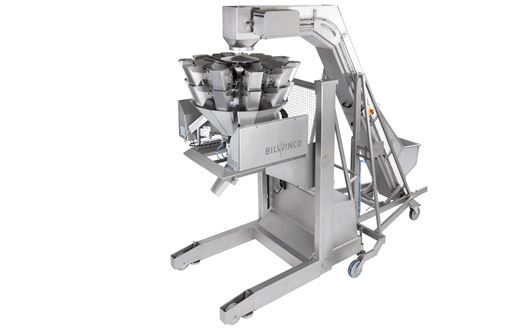Are you making a plan to start a business related to food? Are you worried about the packaging of the food because the food you are going to sell is sticky or powdered or frozen? This problem causes a big hurdle for many people, especially in their first packaging process.
At this stage, they decide to buy a food weigher for easy packaging. But when they go into the market, they find out that a lot of different machines and food weigher are available there with the selling purpose. The linear and multihead weigher are the most common, but according to consumers, multihead weigher offers more efficiency and timely work without any mess. Do you know how a multihead works efficiently? Let’s discuss it briefly.
Table of Contents
How does a Multihead Weigher work?
It is like adding the food and getting it packed in packers or bags on the superficial level. But details show that there is much more going on inside the complicated upper body. Before going into its working process, discuss its history and parts to know it better.
History
Although, in the year 1970, multihead weigher was first built and used by Ishida and it was widely appreciated and used by the food industry all over the world; in other words, it ruled over the world. As the food industry proliferated, the use and need for multihead weigher also began to touch the heights. So, it got people’s attention, so new industrialists entered this field. But with the advancement, many manufacturers added more technological terms into it, making it more reliable for a great range of industries. It fully satisfies everyone, even at the consumer level, a perfect machine for the B2C sector.
Parts
Although, a multihead weigher is used to weigh the products efficiently and speedily without any hassle and mess. But for complete packaging of a wide variety of products, the industrialist needs an entire packaging system, in which multihead weighers do only the weighing activity.
Overall the multihead weigher has the following components, at each point, some critical function is running for fast and easy work. Here I will tell you the parts and discuss their role and the whole process in the next heading.
- Infeed
- Intel Chute
- Dispersion table
- Vibrating radial troughs
- Pool Hoppers (PH)
- Weigh Hoppers (WH)
- Optional booster hopper (BH)
- Discharge Chute
Working
- While using a simple multihead weigher, the typical product weight targeted per pack might be 100 grams.
- The process begins when the product is fed from infeed at the top of the multihead weigher to intel chute.
- Then it is distributed via a dispersion table.
- Next, it goes to the pool hoppers.
- It’s a multihead weigher, so it has multiple pool hoppers; the product goes into each one.
- At this point, in PH, the product stabilizes.
- As soon as the weigh hopper (WH) becomes empty, each pool hopper sends or drops the product into WH, which lies just beneath it.
- Here the product is weighed.
- The weigher’s computer checks and calculates the product weight of each weigh hopper.
- As all the hoppers contain the product, either less or more, the computer allows only those hoppers to open and drop product with maximum weight nearly close to the targeted one, i.e., 100 grams as mentioned in the first point.
- With the help of a discharge chute, the weighted product falls either directly into a bagmaker or a distribution system. This stage places the product into trays.
The following are the two actions that occur during the weighing process in a multihead weigher.
- Dispersion: done by gravity, vibration, or centrifugal force.
- Feeding: done by vibration, gravity, belts, or screw systems.

